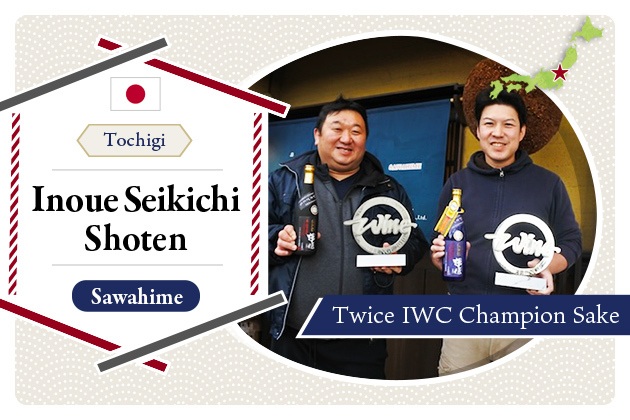
2024.10
02
What is Yellow Koji? - Learn the Role, Characteristics and History
In sake brewing, there is a saying “1 for koji, 2 for moto (yeast starter), and 3 for tsukuri (fermentation)” based on the order of importance of the process. Koji, which is considered the most important, is probably more commonly seen as a way to add flavor and aroma these days.
There are several types of koji, including yellow, black and white koji. Among these, yellow koji is the one traditionally used for sake. Yellow koji is also the raw material for miso and soy sauce, and is an essential part of Japanese food.
In this article, let's learn about the history of yellow koji and how it differs from other types.
Koji and its role
Koji is a type of mold (fungi) that grows on grains such as rice, barley, and soybeans. It is called rice koji, barley koji, or soybean koji, depending on the type of grain used to breed it.
Koji is not only used to brew sake, but is also an indispensable ingredient in shochu, awamori, and other alcoholic beverages, as well as soy sauce, miso, and other fermented foods. It is so inseparable from Japanese food culture that it is called the “national fungus” of Japan.
There are two major roles of koji in sake brewing.
One is the breakdown of rice starch into sugars. Alcoholic fermentation requires sugar. In wine, for example, the sugar contained in grapes is responsible for alcoholic fermentation. Rice, the raw material for sake, does not contain sugar, but starch instead. Alcoholic fermentation becomes possible when the starch is broken down into sugar by the power of enzymes produced by koji mold.
Koji produces alpha-amylase and glucoamylase, which are starch saccharification enzymes. Starch is an aggregate of glucose, but the glucose is connected to each other like long chains and is insoluble in water. First, the starch contained in steamed rice is broken down into water-soluble dextrin by the action of alpha-amylase produced by koji mold.
Glucoamylase breaks down this dextrin into glucose. In this way, sake can be made from rice by the alcoholic fermentation of the sugar decomposed by the enzymes produced by koji by yeast.
Koji also produces acid protease and acid carboxypeptidase, enzymes that break down proteins. Proteins in rice are broken down into peptides by acidic protease, and peptides are further broken down into amino acids by acidic carboxypeptidase. Amino acids are the source of sake's umami and richness, but too much of them can lead to bitterness and other unpleasant tastes, as well as degradation of color and aroma.
Types of koji mold
Koji mold, the source of koji, is mainly classified into yellow koji, black koji, and white koji. Although they are so named because of their apparent color, there are differences in the amount of enzymes and the production of citric acid, so they are used in different ways to take advantage of their characteristics.
Characteristics of yellow koji
Yellow koji has long been used to make miso, vinegar, mirin, and amazake, as well as sake. Its scientific name is Aspergillus orysae, so named because its spore-forming form resembles the Catholic aspergillum, a tool used to sprinkle holy water, and it grows on rice plants, which are in the genus Oryza.
It is yellow to greenish in appearance and has a higher amount of α-amylase than other koji, resulting in a higher starch decomposition power. On the other hand, it produces little citric acid. Since it is susceptible to bacteria, in sake brewing, the addition of lactic acid, low-temperature fermentation, and three-stage brewing are combined to suppress the growth of bacteria.
There are also various types of yellow koji. Since the slightest variation at the genetic level can greatly affect the expression of sake quality, koji makers continue to research and develop koji suitable for ginjo brewing and for use with indigestible rice, among other things.
Characteristics of black koji
Black koji has a black appearance and is characterized by its weak ability to break down starch and its high ability to produce citric acid, which prevents the growth of bacteria. For this reason, it is used to make Awamori and Shochu, liquors from hot and humid regions such as Okinawa and Kyushu regions. Its scientific name is Aspergillus luchuensis, named after the historical name of Okinawa, Ryukyu.
Characteristics of white koji
White koji was created by mutation of black koji. It is an albino mutant, white in color, characterized by low starch decomposition and high citric acid production. Since it is easier to handle than black koji, it is believed to have become the mainstream in shochu production. Its scientific name is Aspergillus kawachii, named after its discoverer.
For more information on white koji and black koji, please see this article:
https://sakestreet.com/en/media/learn-shiro-koji-and-kuro-koji
History of yellow koji
The origins of the tane-koji maker
Tane-koji contributed greatly to the establishment of yellow koji in the Japanese diet. Tane-koji is a “seed of koji” that is inoculated into a substrate such as rice.
Specifically, a purely cultured and preserved strain of koji with the desired characteristics, such as enzyme activity and growth rate, is inoculated into a substrate such as rice and incubated for approximately one week to fully develop the sporulation.
Before tane-koji was invented, koji was increased by the tomo-koji method. This is a method in which good koji is selected from among those produced and used as a starter for the next culture. This is the same method as using commercial products as seeds when making yogurt at home, but it was difficult to culture a single strain of koji, which is essential for stable quality, because of the high risk of transformation and contamination.
Under these circumstances, the tane-kojii method was invented in the Muromachi period (1336-1573). This was a cultivation method that used wood ash. By mixing a few percent of wood ash with the steamed rice used to make koji, bacterial contamination was prevented, and the durability of the resulting molecules was improved. This has dramatically improved the accuracy of pure culture and the production efficiency and quality of seed koji, and has enabled stable seed koji production.
Koji makers came into being with the development of tane-koji. In Kyoto in the early Edo period (*1), there existed two seed koji makers, Kojiya Sanzaemon founded in Muromachi and Omiya Kichizaemon founded in the early Edo period, and it is said that there were several other seed koji makers besides these two in the late Edo period.
In addition, according to the “Geppo Densho ,” a secret book on tane-koji production by the Omiya Kichizaemon family published after the war, it was known that seed koji affected product quality by the mid-Edo period, suggesting that they began to use different types of tane-koji.
*(1) Edo period: the period between 1603 and 1868
Propagation of tane-koji and academic research
During the Edo period, tane-koji was distributed only within a limited area from Mikawa (Aichi Prefecture) to Nada (Hyogo Prefecture), and koji was made using the Tomo koji method in other areas. However, in the Meiji Era (1868-1912), many sake brewers began to purchase tane koji from koji suppliers in search of stable quality.
In addition, the level of biology and microbiology in Japan increased after the Meiji era, and the seed koji production method was studied academically, and a lot of knowledge was shared. In 1873, Hermann Ahlburg, a German who came to the Tokyo Medical School, isolated koji mold from koji for the first time as a microorganism and named it koji mold.
Later, in 1901, Inui Kan discovered Aspergillus luchuensis from Awamori koji, and in 1918, Genichiro Kawachi discovered Aspergillus kawachii, a mutant of black koji mold. The number of seed koji makers increased to about 30, and in the Taisho era (1912-1926), the use of seed koji spread to miso and soy sauce makers as well.
Exploring the diversity of yellow koji
After World War II, mass production was demanded during the high-growth period (approx. 955 to 1973), and tane-koji making was mechanized. Koji makers were most numerous during this period, and strains of koji were selected on the assumption that they would be made by machines.
However, with the end of the high-growth period and the westernization of food, the number of koji makers also decreased. Today, there are less than 10 manufacturers that can be described as corporate scale, and the number of companies producing and selling seed koji for sake is even more limited.
On the other hand, a limited number of manufacturers are using more advanced technology, and research on yellow koji is developing at an ever-increasing pace. Brewing methods and strains of koji strains have been developed to match the characteristics of sake rice, and companies sell tane-koji with a variety of properties. In order to realize the sake quality that sake breweries want to produce, there is a movement toward joint development and internationalization.
The main koji manufacturers for sake in existence are the followings:
- Kojiya Sanzaemon/Bio’c (Toyohashi, Aichi)
- Representative brand: Aroma for Ginjo, Yoi Kaori
- Since its establishment in the Muromachi period, the company has been producing and selling tane koji, and in 1992 established Bio’c.
- Nihon Jyozo Kogyo (Tokyo/Hitach, Ibaraki)
- Representative brand: Ginrei, Seirei
- Established as a soy sauce brewing and seed malt manufacturing company.The company is working on internationalization efforts, including acquisition of Halal certification.
- Higuchi Matsunosuke Shoten (Osaka)
- Representative brand: Hikami, High-G
- Established in 1855 in Semba, Osaka.The company is also engaged in joint development of seed koji with sake brewers.
- Akita Konno (Daisen, Akita)
- Representative brand: Ginko, Roots36
- After being established in Kyoto in the Meiji Era, the company moved to Akita.The company is expanding its sales channels by applying its technology to fields other than brewed foods.
- Hishiroku (Kyoto)
- Representative brand: Byakuya
- The only remaining koji maker in Kyoto.They also offer hands-on koji making classes.
Summary
It is surprising that a stable method of cultivating koji was established in the Muromachi period, when biology was still undeveloped, and that different strains of koji were used in different ways based on their characteristics. Koji is an important ingredient that determines the flavor of sake, but it tends to be overshadowed by rice varieties and yeast.
The decision of which type of koji to use is a test of a craftsman's skill. As one of the keys to sake brewing, it would be interesting to pay attention not only to white or black koji, but also to yellow koji with what characteristics.
References
- Hideya Murakami, アスペルギルス・オリゼーの発見― コウジカビの独立性 ― [Discovery of Aspergillus oryzae- Independence of kouji molds], Journal of the Brewing Society of Japan 66-2, 1971
- Kinichiro Sakaguchi et al. 黒麹菌に関する研究(総括) [Research on black yeast (summary)], Journal of the Agricultural Chemical Society of Japan 24-3, 1950
- Osamu Yamada 黒麹菌の学名がAspergillus luchuensisになりました [The scientific name for black koji fungus is now Aspergillus luchuensis], Journal of the Brewing Society of Japan 110-2, 2015
- Akihiro Nakamura et al. 焼酎白麹を用いた清酒もろみの発酵特性 [Fermentation characteristics of sake mash using shochu white koji], Journal of the Brewing Society of Japan 85-2, 1990
- Kimio Iwano et al. 焼酎白麹の諸酵素の特徴について [Characteristics of various enzymes in shochu white koji], Journal of the Brewing Society of Japan, 83-12, 1988
- Yohei Shiraishi, 種麴 ―古くして新しきもの― [Tane Koji -Old and New], Journal of Bioscience and Bioengineering 96-3, 2018
- Hideya Murakami, 種麹の製造を見て [Watching the production of tane-koji], Journal of the Brewing Society of Japan, 54-291, 1959
- [note] Yuichiro Murai, 種麹の歴史と未来(江戸〜令和) [History and Future of Tane Koji (Edo-Reiwa Period)]
Pickup Articles
2019.01.18
2019.01.25
Trending Articles
Popular Articles
Recent Articles













